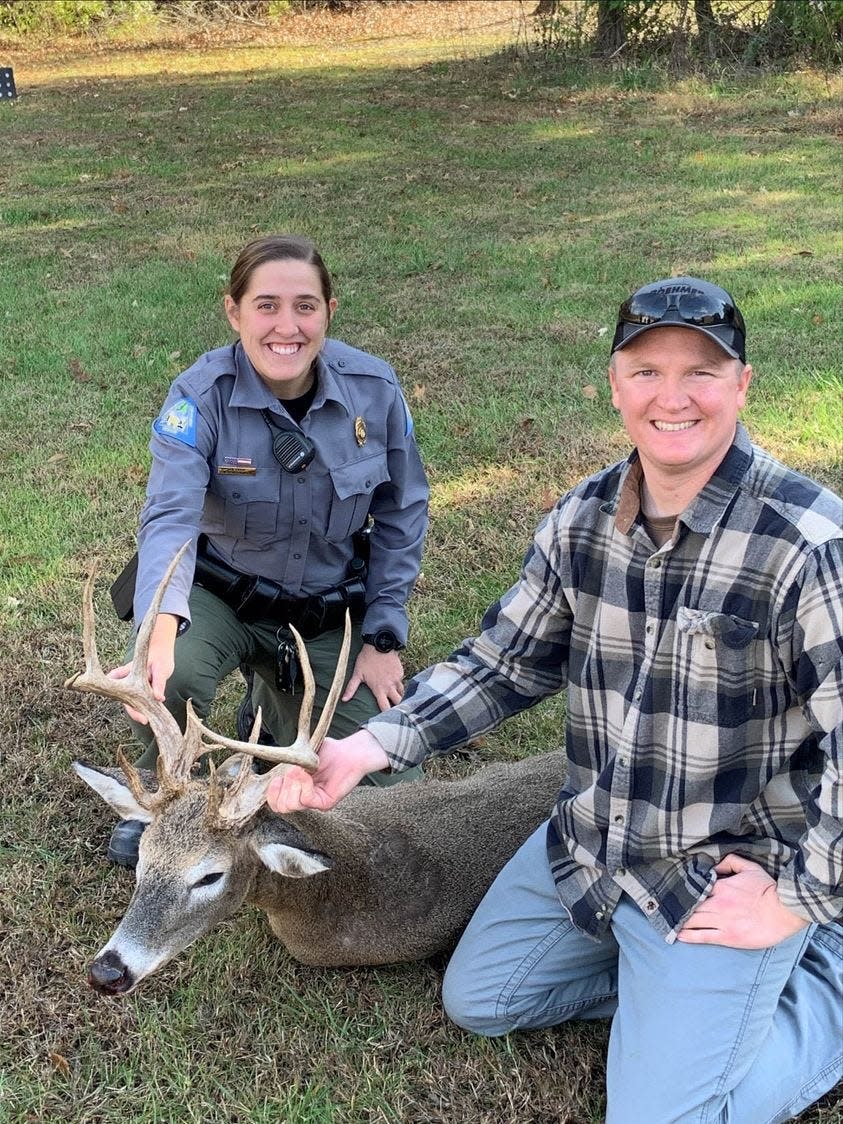16-point antlered doe killed in Monroe County is 'pretty darn rare,' says deer biologist

A hunter in Monroe County recently shot and killed what he thought was a buck. When he took a closer look, he was shocked to discover the 16-point deer appeared to be female.
Hunter Samuel Perotti called conservation agent Jessica Filla over firearms deer season and told her about his kill. He told Filla that he had captured pictures of the deer on his game camera and was surprised to find out it was actually a doe.
The Missouri Department of Conservation shared Perotti's discovery on Facebook, and in less than 24 hours, the post had reached nearly 7,000 shares.
Private Lands Deer Biologist Kevyn Wiskirchen oversees deer research projects with MDC. He hears about possible "antlered doe" a couple of times a year.
"If you consider this year we'll probably harvest roughly 300,000, maybe a little more, deer in the state, you hear of only one or two instances like that, that means it's pretty darn rare," Wiskirchen said in a phone interview with the News-Leader. "It's hard to put an exact number on it, but suffice to say, that sort of thing is very rare."
More: Independence man gets 'once-in-a-lifetime buck' with 22 points on antlers
But MDC describing Perotti's kill as an "antlered doe" in the social media post requires a bit more nuance. Reviewing images of the deer's antlers, Wiskirchen theorized that the doe may not just be a doe at all.
"True antler does, or females, can occur, so other than the antlers on their head, they're a normal female," he said.
An antlered doe would have ovaries rather than testes. So, the antlers wouldn't shed the velvet membrane growing on developing antlers which would later harden. In a photo of Perotti's deer, it appeared the antlers had reached a hardened state, Wiskirchen said.
"So, the female deer can grow antlers, they'll typically be small, and they won't have developed to the point where there'll be hardened antler with the velvet that comes off," the biologist said.
More: A closer look at what it means to test for Chronic Wasting Disease in Missouri
"In this particular instance where we're seeing a large set of antlers with hardened antler, it's probably not a true female," he continued.
This deer may be a hermaphrodite or a male pseudohermaphrodite, Wiskirchen added. The deer likely had testes, or male reproductive organs, somewhere in its system, but they weren't apparent.
"Otherwise, the hunter would have called it a buck and never thought anything of it," Wiskirchen said.
The deer likely had at least one teste, maybe in the abdominal cavity or between the abdomen and skin, Wiskirchen said. The presence of a teste would explain the hardened antlers because they need testosterone to complete an antler growth cycle.
More: 5-year-old girl takes home new boat, thanks to Johnny Morris Happy Fishin' Kids Contest
Wiskirchen and other biologists weren't ale to inspect the deer because it was already field dressed, so these are just theories. Even if the deer was a true antlered doe, a hermaphrodite or male pseudohermaphrodite, this is still a unique case.
"It's still a rare thing, not to diminish it at all, but if we're getting technical here, it's likely not a true antlered female," Wiskirchen said.
Sara Karnes is an Outdoors Reporter with the Springfield News-Leader. Follow along with her adventures on Twitter and Instagram @Sara_Karnes. Got a story to tell? Email her at skarnes@springfi.gannett.com.
This article originally appeared on Springfield News-Leader: Deer biologist says 16-point antlered doe killed in Missouri is rare

